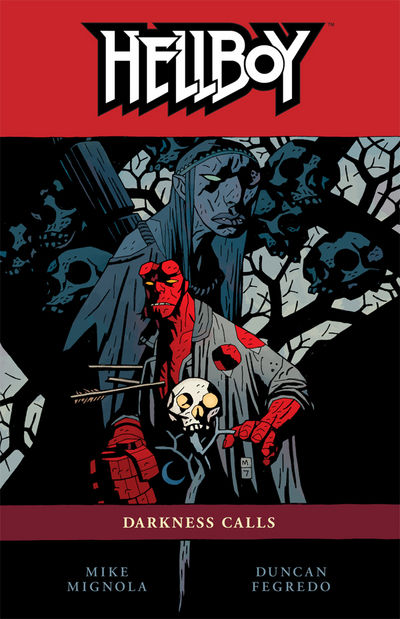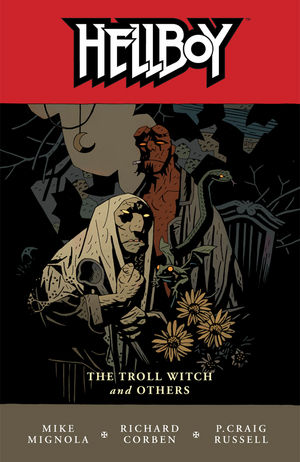All-Star Superman, v. 1
Collects: All-Star Superman #1-6 (2006-7)
Released: April 2007 (DC)
Format: 160 pages / color / $19.99 / ISBN: 9781401209148
What is this?: Morrison and Quitely respin Silver Age Superman madness into a modern tale of morality and mortality.
The culprits: Writer Grant Morrison and artist Frank Quitely
I almost decided not to review All Star Superman, v. 1 because I didn’t feel I could be properly reverential to a story that has gained nearly universal acclaim since it came out. After thinking about it, though, I decided to give it a shot.
I don’t think I’m spoiling anything when I say writer Grant Morrison and artist Frank Quitely’s All-Star Superman is the most acclaimed work on Superman in at least a decade and probably a lot longer than that. I never really understood why before I read v. 1. Really, I still don’t.
 Don’t get me wrong. I can see that Morrison is telling a story that, if not unique in the Superman mythos, is darn close to it. He uses Silver Age trappings to tell an out-of-continuity story — one which could not be contained by continuity, one might say — in which Superman confronts mortality and performs a mythological set of tasks, on par with Heracles’s Twelve Labors. Morrison and Quitely know the mythos and know the characters; everything feels natural yet modern. The stories feel like Superman stories, with larger than life antagonists and consequences.
Don’t get me wrong. I can see that Morrison is telling a story that, if not unique in the Superman mythos, is darn close to it. He uses Silver Age trappings to tell an out-of-continuity story — one which could not be contained by continuity, one might say — in which Superman confronts mortality and performs a mythological set of tasks, on par with Heracles’s Twelve Labors. Morrison and Quitely know the mythos and know the characters; everything feels natural yet modern. The stories feel like Superman stories, with larger than life antagonists and consequences.
There are some parts I enjoyed — the issue with Clark Kent and Lex Luthor escaping from a prison riot started by the Parasite, Superman’s scenes with his father, the integration of modern Superman elements like Doomsday into the narrative. The funeral and Clark’s eulogy near the end of the volume are moving. I cannot deny Morrison’s craft is excellent, and that he has put together a narrative of high technical quality.
And yet — and yet, and yet, and yet … I didn’t enjoy this book. Perhaps because I don’t enjoy Superman all that much. I don’t have anything against the Big Blue Boy Scout, but neither he nor his supporting cast have ever interested me. Many reasons have been bruited about on the Internet for why readers might be disinterested in Superman; I suppose I don’t buy that Superman can ever be put in peril, and I don’t care about Clark Kent.
Morrison tries to get across the idea that Superman can be harmed, but I don’t buy it. I don’t buy the idea that the scientists will allow Superman to die. It is an out-of-continuity story — whatever that means for DC — so there is the possibility that Superman will be seriously hurt or end the story dead. However, when you’re dealing with a story that has such a strong whiff of the Silver Age, it’s hard to believe anything negative is going to happen.
I really dislike DC’s Silver Age stories. They are goofy, but generally speaking, not a in a good way; they are goofy in a halfwitted manner that makes me chuckle once or twice, then stop because I should not be laughing at such awful things. People worked hard at those stories, and by and large, they’re not worth re-reading. Morrison tries to capitalize upon the energy and lack of rules those stories enjoyed, but it mainly reminds me that the original stories were stupid, and no amount technobabble can disguise that — especially when the word “hyperpoon” is used. I mean, honestly.
Most of the characters in this book aren’t all that interesting; perhaps it’s because of the Silver Age-ishness. Other than this is his story, I don’t see a reason to get worked up about Superman: he’s not witty or fun or interesting. He’s stolid and heroic, which is not nothing, but it’s hardly unique. Superman might have gotten there first with those characteristics and with the most, but Nathaniel Bedford Forrest’s maxim aside, that’s not enough. He’s also a superscientist, but the story shows for the most part he’s cast that identity aside to be Clark Kent and Superman. Clark is an idealist, which, when he’s out of costume, is more annoying than not; his bleating that Superman and Luthor could have been friends if Luthor had just given up that gosh-darn evil is a low point for the book. Lois is … Lois is a “great” reporter who can’t believe the evidence of her eyes; Jimmy Olsen is wacky and obviously prone to abusing any power he gets.
The only character I felt empathy for was Luthor, which isn’t surprising. If Superman and his supporting cast are based off a Silver-Age template, then Luthor is himself based on an even older pattern: a Miltonian Satan. Better to rule in Hell, as Luthor does in prison, than to serve in Superman’s heaven. He’s interesting, and he’s fun in a supervillain sort of way. He’s the one person who can say the negative things the readers might be thinking, although he will always go too far. He’s obviously the antagonist, though, so while we can enjoy Luthor’s rants, we’re not supposed to root for him.
The art in v. 1, like Morrison’s writing, is something I don’t appreciate despite its widespread claim; I suppose I’ll just have to live with having an unpopular opinion. Quitely’s art did not bother me as much as usual with this issue. Since I’m not as familiar with the faces of Superman characters, his interpretations of their faces didn’t strike me as being wrong, as it might with Marvel characters. Quitely does a good job making Clark Kent and Superman look different; I wouldn’t believe they were the same character if I didn’t know better. (Which could be a problem, if other Superman books hadn’t given us super-disguise skills.)
The craftsmanship of this story is undeniable; I can see why other readers might enjoy it. But I can’t get into the story. It seems to accept as given some things that I can’t believe — that Superman is intrinsically interesting, that his stories have dramatic tension, that DC’s Silver Age plots and ideas are worthy of resuscitation. It’s not unlike reading a great author’s Dan Brown pastiche: well done, but what’s the point?
As for the rating, I went back and forth on this. Like I said, I recognize the quality of this book — it’s at least a 4 of 5. But my enjoyment, at most, is at a 2. So I averaged them together to get …
Rating: ![]()
![]()
![]() (3 of 5)
(3 of 5)
Labels: 2007 April, 3, All Star Superman, DC, Frank Quitely, Grant Morrison, Metropolis, Superman





 The first arc is written by primary Spider-scribe Dan Slott, and Slott manages to make the best of a story, like
The first arc is written by primary Spider-scribe Dan Slott, and Slott manages to make the best of a story, like  Happily, Fegredo fits right in. His art for Darkness Calls is similar to Mignola’s, although scratchier and not quite as shadowy or blocky. The loss of shadows works against Fegredo, but that’s a quibble. His Hellboy is slightly different as well, less massive and square — although a quick glance might not be enough for readers to be able to detect the differences. Fegredo’s fight scenes are well choreographed, and readers will have little trouble following the action. All in all, if readers can’t have Mignola’s art, then Fegredo will serve excellently.
Happily, Fegredo fits right in. His art for Darkness Calls is similar to Mignola’s, although scratchier and not quite as shadowy or blocky. The loss of shadows works against Fegredo, but that’s a quibble. His Hellboy is slightly different as well, less massive and square — although a quick glance might not be enough for readers to be able to detect the differences. Fegredo’s fight scenes are well choreographed, and readers will have little trouble following the action. All in all, if readers can’t have Mignola’s art, then Fegredo will serve excellently.  (3.5 of 5)
(3.5 of 5)  The title story is the best of the lot. It’s a simple tale that Mignola borrows from a Scandanavian folktale, only to have one of the characters in the story specifically point out the folk tale ends too neatly. The story ends with a nice character moment for Hellboy as well, with the witch seeing a bit too deeply into Hellboy’s psyche for his comfort. “Dr. Carp’s Experiment” is a nice little story as well, involving mad Victorian science, time travel, and demon apes. Unfortunately, it’s a little reminiscent of Inger von Klemt and his Kriegaffe in
The title story is the best of the lot. It’s a simple tale that Mignola borrows from a Scandanavian folktale, only to have one of the characters in the story specifically point out the folk tale ends too neatly. The story ends with a nice character moment for Hellboy as well, with the witch seeing a bit too deeply into Hellboy’s psyche for his comfort. “Dr. Carp’s Experiment” is a nice little story as well, involving mad Victorian science, time travel, and demon apes. Unfortunately, it’s a little reminiscent of Inger von Klemt and his Kriegaffe in